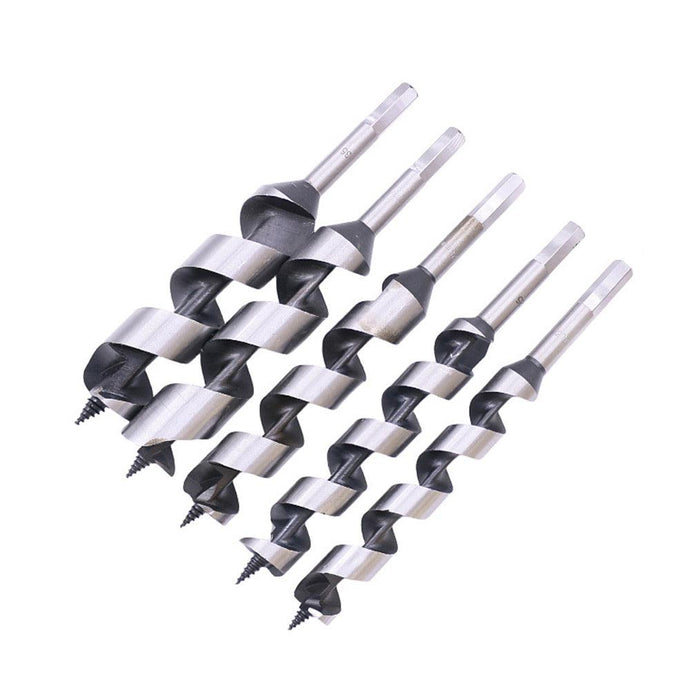The Precision Power of the Forstner Bit: Why Every Woodworker Should Own One
In the world of woodworking, the right tool can make all the difference between a rough, unfinished project and a masterpiece of craftsmanship. One such indispensable tool, though sometimes overlooked by beginners, is the Forstner bit. While many woodworkers may start with basic drill bits for creating holes, those who seek precision, clean edges, and versatility eventually find their way to the Forstner bit. Whether you're working on cabinetry, furniture, or intricate joinery, this special bit opens up possibilities that standard bits simply can't match.
So, why would you use a Forstner bit? The answer lies in its design and functionality. Unlike common twist or spade bits, the Forstner bit is engineered for highly precise, clean cuts in wood, and it excels at applications where accuracy and surface finish are paramount. From producing flat-bottomed holes to overlapping or angled cuts, the Forstner bit proves its value in a variety of tasks that demand finesse.
One of the primary advantages of a Forstner bit is the quality of the holes it creates. Traditional twist bits are fine for drilling through material, but they often leave behind ragged edges, especially when exiting the opposite side of the wood. Forstner bits, however, are designed with a flat cutting edge and sharp rim, ensuring that the holes they produce are smooth and clean, with well-defined borders. This makes them ideal for work where appearance matters, such as when you're drilling holes for dowels, installing cabinet hardware, or creating decorative accents. The clean edges also reduce the need for further sanding or finishing, saving time and effort.
In addition to producing smooth holes, Forstner bits also offer exceptional control. Their unique design allows them to drill partially through the wood without exiting the other side, which is useful when you need flat-bottomed holes for inlays, mortising, or shallow recesses. The ability to stop precisely at a specific depth without bursting through the wood makes Forstner bits a favorite among woodworkers who value precision. Whether you're working on a custom project or mass-producing components, this control ensures that every hole is perfectly sized and placed.
Another reason to use a Forstner bit is its versatility in drilling at angles or creating overlapping holes. With a standard bit, attempting to drill at an angle or make holes that intersect with each other can result in a sloppy, uneven cut. Forstner bits, on the other hand, can handle these tricky situations with ease. Their sharp, circular cutting edge stays engaged with the wood, even when starting a hole at an angle or cutting into the side of another hole. This makes them indispensable for tasks like creating mortise-and-tenon joints, fitting dowels into curved surfaces, or drilling holes for wiring in furniture. The ability to make precise, clean cuts in difficult situations is a hallmark of the Forstner bit's design.
Another significant benefit of using a Forstner bit is its ability to work on both softwoods and hardwoods with equal effectiveness. Whether you're drilling into pine or dense oak, the bit maintains its cutting efficiency, providing consistent, high-quality results. This versatility is crucial for woodworkers who work with a variety of materials and want to avoid constantly switching between different types of bits. While softer woods are more forgiving, hardwoods can be particularly challenging for standard drill bits, which may dull quickly or produce tear-out. The Forstner bit, thanks to its robust cutting teeth and efficient chip removal, stays sharp longer and maintains clean cuts even in the toughest materials.
Moreover, the Forstner bit's capability extends beyond just wood. Its versatility also allows it to work effectively with materials like plastic, plywood, and even certain soft metals, making it a valuable tool in workshops where a range of materials are used. This adaptability adds another layer of functionality, giving the woodworker flexibility without compromising on precision. Whether you are working on a high-end piece of furniture, custom cabinetry, or a simple DIY project, having a bit that can switch between different mediums without sacrificing quality is a significant advantage.
While Forstner bits may seem like specialized tools, their application extends across many common woodworking tasks. For example, when making European-style concealed hinges, the ability to drill perfectly flat-bottomed holes with clean edges is crucial. Without a Forstner bit, achieving the necessary accuracy for such hardware would be far more difficult, if not impossible. Similarly, for tasks such as drilling through thick stock, aligning holes for dowel joints, or setting up jigs, the precision and control offered by a Forstner bit become indispensable.
Even for hobbyists or those just beginning to explore woodworking, investing in a set of Forstner bits can elevate the quality of your work. While these bits may cost more than basic twist bits, their long-term value is undeniable. The time saved in sanding, correcting errors, and the superior results they deliver make them a worthwhile addition to any toolkit. They offer a level of precision and versatility that other bits simply cannot, and once you've experienced the difference, it's hard to go back to more basic tools.
In conclusion, the Forstner bit is a true workhorse for woodworkers who prioritize accuracy, cleanliness, and versatility. Its ability to produce smooth, flat-bottomed holes, drill at angles, overlap cuts, and work across a variety of materials sets it apart from standard bits. Whether you're a seasoned craftsman or a novice, adding Forstner bits to your tool collection can transform your projects and allow you to tackle more complex, precise work with confidence. With this tool in your arsenal, you'll not only expand your capabilities but also achieve professional-grade results in your woodworking projects.

